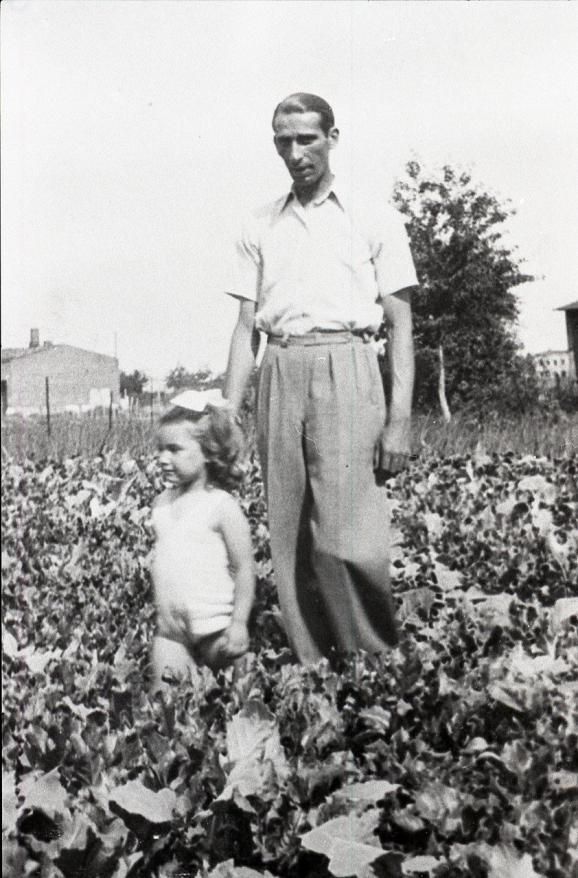

Last year, Tina Rosenstein and her husband Marcel toured Yad Vashem with their two sons, Eric and Sean, in honor of Sean's bar mitzvah. However, due to a recent extraordinary discovery by staff in Yad Vashem's Artifacts Department, the family learned that a small silver powder compact that once belonged to Tina's grandparents is on display in the Yad Vashem Holocaust History Museum. They eagerly returned to Israel from their hometown in Canada to view this special Holocaust-era treasure for the very first time.
The extraordinary story began with Tina's maternal grandparents, Jakob and Tania Stopnicki, who were incarcerated in the Lodz ghetto. In 1941, Jakob gave Tania the powder compact as a gift, for which he traded his daily ration of bread. Against all odds, Jakob was also able to save Tania and their infant daughter Krysia by hiding them in a bunker in the ghetto while the ghetto was being liquidated, until the ghetto was liberated in January 1945. Krysia was one of the few children who were born in the Lodz ghetto and miraculously survived. Sadly, Tania passed away a year after the ghetto was liberated.
The powder compact was donated to the Yad Vashem Artifacts Collection by a surviving Stopnicki family member. After Yad Vashem researchers began to investigate, they started to unravel the mysterious details behind the compact and its owners. On the compact is a portrait of a Jewish man behind barbed wire, etched by Jewish artist Max Prinz. Researchers were able to determine that this portrait was based on a photograph taken by Lodz ghetto photographer Mendel Grossman of his father, Shmuel Grossman. On the back of the compact is engraved, "Litzmannstadt [Lodz] Ghetto 1941." Shmuel Grossman and Max Prinz were murdered in the Holocaust.
The researchers worked tirelessly to try to find more information about the owners of the compact and their family members. To complicate matters further, they discovered various documents in several archives pertaining to no less than three people named Jakob Stopnicki in the Lodz ghetto. After much cross-referencing and examination, they found several photographs of Jakob and Tania Stopnicki taken by another Lodz ghetto photographer, Henryk Ross, during the war. Much to their amazement, they also found living descendants of the couple living in Canada – among them Krysia herself, her daughter Tin, who was named for her grandmother, and her son Jeffrey.
Before entering the museum, an emotional Tina face-timed with her mother, Krysia, who lives in Montreal, and wished she could have made the journey to see the compact. "I was truly overwhelmed with emotion holding my grandfather's powder compact for the first time. I will always remember my grandfather as a generous and loving man," she said. "Holding the compact, I tried to imagine what he felt like giving such a beautiful present to his wife under such horrific conditions."
Tina continued, "I still can't believe the bond I now have with Yad Vashem – part of our family's history is literally on display to share with the millions of visitors that come here every year. I told my teenage boys that I hope that when they grow up they bring their children to see the powder compact displayed in the Lodz ghetto exhibit, and that they never forget their personal connection to Yad Vashem."









